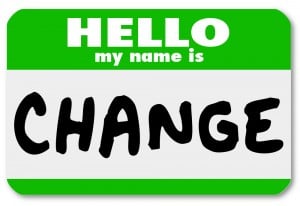Change is hard, and change can even be scary, but most of the time change is for the better. This applies to business processes, your personal life, associations, and even large organizations such as Target Corporation. The 2015 Tableau Conference website has great sessions posted, including one called “A Journey toward Self-Service BI for the Business at Target.” Tableau was extremely well received at Target as evidenced by the 500 licenses they have in use. In the presentation they shared some valuable tips worth highlighting because they apply equally to associations.
Tableau by itself is not a strategy
Like any new tool introduced, you can’t expect the tool itself to stand on its own and be the strategy. More effort will be involved in addition to implementing the software, such as building skills and interest in Tableau and analytics. Building interest will entail a culture shift as you encourage people to explore the data in ways they never previously thought possible. As we have mentioned before, leadership support is crucial for success and that point was reiterated in this presentation several times. Think about how impressive and productive it will be when you participate in a meeting with senior leadership and not only answer the known questions, but also easily answer new questions posed on the fly – ones that the leaders didn’t even know they had!
Don’t use Tableau the same way you use Excel
It is always comical to listen to presenters share a story about how the business staff learned the hard way that the success of using Tableau doesn’t come from recreating massive tables of numbers in chart format. Tableau is not particularly suited for nor is it a strength to create a large table of numbers like you might in Excel. Applying a visualization is where the success lies, because the brain can interpret an image much faster than it can analyze rows of numbers. Plus, images portray patterns that you may miss if you just view a traditional table full of numbers.
Operational Effectiveness
This term means there is transparency and clarity into the business and it is easy to see if the business is efficient and meeting strategic objectives. In associations, this means everyone is working from the same data and definitions for how many active and lapsed members there are, the total attendance for an event including cancellations and last minute onsite registrations, and annual budget numbers compared to actual expenses. The information can be made available immediately to everyone. Yes, it is likely to entail a culture shift (aka change) within the association, but it will save everyone time and enable better decision-making because the story in the data will be clear.
There is no doubt a data analytics strategy at your association which includes Tableau will require some change, but with these tips and plenty of training (Target suggests a minimum of 5 hours per person) you’ll notice widespread adoption with happier employees making better data-guided decisions. If you don’t know where to start, pick a process which has a complicated and almost obscure set of spreadsheets for communicating numbers and turn them into data visualizations with Tableau. Then you’ll see how fast staff will be converted to raving fans of analytics and Tableau.




